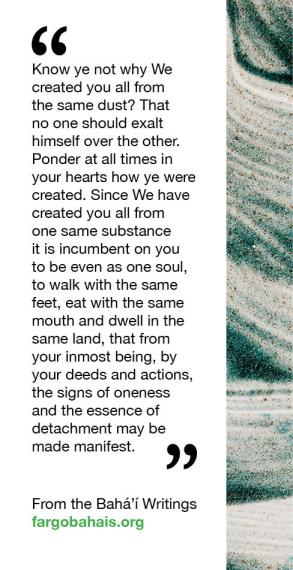Gadfly | November 25th, 2014
Every day we learn more about death, whether its from old age, disease, accident, murder, war, religion, suicide, or just being in the wrong place at the wrong time. We don’t seem to handle death very well in most instances, although it is inevitable. In Shakespeare’s epic, Hamlet is debating whether he should kill Claudius, the killer of his father who has married his mother, or whether he should avoid the whole mess by committing suicide:
“To be, or not to be – that is the question: whether it is nobler in the mind to suffer
The slings and arrows of outrageous fortune or to take arms against a sea of troubles
And by opposing end them. To die, to sleep – no more – and by a sleep to say we end
The heartache, and the thousand natural shocks that flesh is heir to.
Tis a consummation devoutly to be wished.”
When Hurricane Katrina hit New Orleans in 2005 it flooded Memorial Medical Center, a hospital which was also named as a hurricane shelter. As many as 20 terminal patients, and possibly up to 45, were given overdoses of morphine and other drugs because evacuating them from the flooded hospital was close to impossible. Some were close to death, some were not. The hospital at that time had no electrical power, no water, and the temperature in wards was over 100 degrees. (If you wish to know more about this incident, read Sheri Fink’s New York Times article, “The Deadly Choices at Memorial” in the August 25, 2009 edition.)
About a year later doctors and nurses involved in these “mercy killings” were investigated by a grand jury but not indicted. In her article, Fink wrote:”The case faded from view.” Did these hospital patients “suffer the slings and arrows of outrageous fortune?” Did the doctors and nurses “take arms against a sea of troubles?” What about the old medical premise that doctors and nurses should at least “do no harm?” Did the doctors and nurses “harm” them by killing them with drug overdoses, or would they have done them more “harm” by having them die alone in immense pain and suffering in their hospital bed? It’s a tough question that requires a tough answer. Did the doctors “do harm?”
When 29-year-old Brittany Maynard with terminal stage 4 brain cancer moved from California to Oregon with her husband and family to take advantage of Oregon’s laws on euthanasia, she revived the debate about euthanasia and physician-assisted suicide in this country. (Stage 4 means the cancerous tumor has spread to other organs.) She died under the law November 2. I wonder if former Minnesota Viking cornerback and safety Orlando Thomas considered physician-assisted suicide. He died at age 42 with ALS (Lou Gehrig’s Disease). His playing weight in 2001 was 225. He died weighing 70 in November, 2014. What pain and suffering did he encounter? He certainly faced “a sea of troubles.”
The Oregon physician-assisted suicide program has been around for 17 years and has been used 750 times. The criteria is quite strict. Two doctors have to certify that the individual will survive for fewer than six months, must not be depressed or acting on impulse, and must administer the pills or drugs with their own hands.
Three European countries, Belgium, the Netherlands, and Luxembourg, allow euthanasia for the terminally ill. The Netherlands legalized it in 2002 with these three important conditions: (1) the patient must be suffering unbearable pain, (2) their illness must not be treatable or curable, and (3) the demand for the action must be made in “full consciousness by the patient.” In 2010, 3,136 people were given lethal doses. The Netherlands also has a palliative sedation program where hospitalized patients with a life expectancy of two weeks or less may be put into a medically-induced coma with all nutrition and hydration stopped. The Royal Dutch Medical Association has handled about 15,000 of these “comas” per year, even if there is considerable discussion in the country whether it is legal or not. The De Einder (Horizon) Foundation in the Netherlands advises people about committing suicide, but they do not provide drugs or weapons and refuse to be around when the person does commit suicide.
Belgium also legalized euthanasia and physician-assisted suicide in 2002, and just in February of 2014 legalized euthanasia for dying children of any age. The Netherlands has a minimum of age 12 for the act. Belgium authorities allow it for any age if the doctors and parents agree that there is no treatment for intense suffering. The child must also be assessed by a psychologist who measures “discernment” of the child. The law does not describe exactly what “discernment” is. Some say it means the child must know he is going to die. All euthanasia laws of this type are quite popular in Belgium, according to polls. The use of the law goes up each year. Belgium had 235 cases in 2003, 708 in 2008, 1,432 in 2012, and 1,807 in 2013. The law requires that the doctor must be present at the bedside until the patient dies. Over half of the patients were 70 or over. A 45-year-old set of deaf identical twins decided to end their lives when they learned they were both going blind and had nothing left to live for.
Luxembourg allows euthanasia, but a patient must have approval from two doctors and a panel of “experts.” Germany and Switzerland allow assisted suicide as long as the lethal drug is taken by the patient without assistance. Relatives cannot support or guide the hand with the drug. Switzerland has organizations called Dignitas and Exit that provide assisted dying services for a fee. Finland has no laws pertaining to assisted suicide or euthanasia but aiding people to die is not necessarily frowned upon.
Support for the three actions listed above is gaining strength throughout the US because people are living much longer and are susceptible to more painful, debilitating, and incurable diseases. Oregon, Montana, Washington, New Mexico, and Vermont have passed “Death with Dignity” laws and several other states are considering bills. In 1948 only 37 percent of the public thought doctors should be allowed to “end the patient’s life by some painless means.” The last Gallup Poll on the subject in May 2014 revealed that over 70 percent agreed with the premise. An advocacy group called Compassion and Choices was contacted by about 3,000 suffering patients last year who wanted to have aids in dying. At any one time we have over 10,000 vegetative state patients occupying beds in hospitals, nursing homes, and other facilities at the cost of hundreds of millions of dollars per year.
We do need some definitions to discuss ethical considerations in “Death with Dignity” cases. If a patient is brain dead that means the patient is no longer alive because all activities in the brain and brain stem have ceased. Patients in a coma are in a state of depressed consciousness from which they cannot be awakened, although they have some brain stem responses and may have spontaneous breathing episodes. The eyes are always closed, but it is possible for patients to recover from a coma. It’s very rare, however. Patients in a vegetative state are alive but have severely impaired consciousness. Their eyes may open and close spontaneously, but with no awareness of their environment. The record for survival in a vegetative state is held by Elaine Esposito, who died after living 37 years and 111 days.
When the New Mexico Supreme Court decided that doctors in that state could provide lethal prescriptions and declared that competent, terminally-ill patients have a right to choose aids in dying, Roman Catholic Archbishop Michael Sheehan of Santa Fe testified that “the church teaches that life is sacred from conception through to natural death. I forsee dangerous consequences.” He didn’t elaborate on those dangers – or what “natural death” is. Let’s remember the Vatican took over 400 years to agree that the earth revolved around the sun and 200 years to admit that evolution was “possible.” In the mean time “heretics” and scientists were literally and figuratively burned at the stake for their beliefs. It seems to take centuries to change the church curriculum in Rome. For example, it has been only since Vatican II 52 years ago that Catholics who committed suicide could be buried in sanctified ground, a Catholic cemetery.
The Catholic Church still teaches that euthanasia and suicide are crimes against life and crimes against God. Many Protestant churches are just beginning to recognize that such acts are acceptable in modern life. Biblical experts insist that there is no explicit prohibition of suicide in the Bible, although there are nine passages that mention it. These passages do not discuss the morality of the act. Actually many early Christians chose suicide over persecution they faced before the 4th Century. It was the period of Christian martyrs. St. Augustine was the first to condemn the act.
Among other religions, Hindus believe ending a painful life is a religious act. Islam, with all its beheadings, suicide bombers, and jihad martydoms, forbids all forms of suicide, assisted or unassisted. Muslims are forbidden to know the time of their death. This comes from the refusal of Muhammand to bless the body of a suicide. In Japan the Shinto religion points out that artificial means to extend life is “disgraceful,” but about 70% believe in voluntary passive euthanasia and the rest believe in active euthanasia anyway.
Is unearned suffering redemptive? Does “no pain, no gain” apply to religious growth? People certainly have a right to suffer if they believe God is keeping track. Does God give you a painful cancer so you can suffer greatly and be redeemed? I see Rachelle Savageau, director of the “Respect for Life” office of the Fargo diocese, says: “Euthanasia...can never be considered a ‘humane’ act. It can never be an authentic human response to kill an innocent human person, most especially when they are suffering, vulnerable, terminally ill or dying.” Death is part of life for everyone. Shouldn’t we respect death as much as life? Shouldn’t the office she directs for the bishop be called “Respect for Life and Death?”
Noted playwright and writer Nora Ephron, who suffered and died early of a rare blood disease, said prophetically: “Death is a sniper.” In other words, we never know when we are going to be hit – and usually it’s when we least expect it. It’s an interesting historical fact that President Ronald Reagan had Alzheimer’s for about half of his last term ending in 1988, according to his son Ron. He was officially diagnosed in 1995 and died of it at the age of 93 in 2004. He had the slow kind. My sister died of Alzheimer’s after only three years of that mind-numbing disease. It’s also interesting that Prime Minister Margaret Thatcher of Great Britain, Ronald Reagan’s great buddy, spent 14% of her life in dementia, not recognizing a soul.
Is this man humane? George Sanders, 86, and his wife Virginia, 81, spent 62 years of married life together. At the time of her death at 81 years Virginia had suffered from multiple sclerosis for 45 years, much of it in a wheelchair. In the 1970s they moved to Phoenix because the warmer climate would be easier for her. George, a WWII vet, became her sole caregiver. He did the cooking, cleaning, the laundry, applied her makeup, changed her diaper, took her to beauty salons for haircuts, and held up her hands so she could be given manicures. Virginia finally got gangrene in her feet and George had to have a pacemaker implanted. She was about to be admitted to a hospital for an operation and then placed in a nursing home. She pleaded with George to kill her. He finally did by shooting her in the head. He was charged with first-degree murder and faced a minimum of 12 years in jail. At his trial everyone in the courtroom decided he had done the humane thing. Agree?
July 7th 2025
July 1st 2025
June 24th 2025
June 19th 2025
June 9th 2025
__293px-wide.jpg)




__293px-wide.jpg)